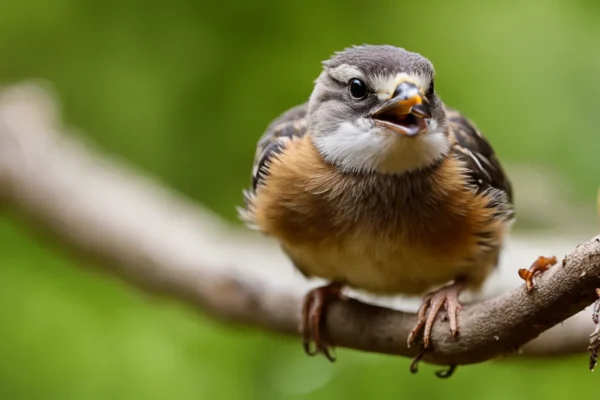Winter and early spring, from January to April, are the ideal times to watch woodpeckers. It’s easier to see woodpeckers at this time of year since the trees are naked. Aside from being more territorial, woodpeckers announce their presence throughout this season with their characteristic cry and drumming.
When are woodpeckers most likely to be seen?
When there are fewer disruptions and the light is at its purest in the morning, it’s the ideal time of day to watch woodpeckers. When the woodpeckers fly about in pursuit of food and mates, this makes it simpler to see them. It’s possible to see them around dusk while they’re foraging for insects on the trees if you’re quiet and patient. No matter when you start looking, you’ll need to be patient and have an open mind in order to find these stunning birds.
Because they are seeking mates, woodpeckers are most active in the spring.
Numerous yards often see woodpeckers, particularly in the spring when their activity increases. By repeatedly tapping and chipping at wood with their pointed beaks, these birds search for insects and other food sources in the trunks and branches of trees. They are, however, also searching for acceptable partners with whom to begin a family at this time of year. As they go over their home areas, woodpeckers sing loudly and rhythmically, using an amazing repertoire of cries that they have developed to entice possible mates.
They often dig out cracks over a period of months in order to reproduce in tree cavities. Small woodpeckers are raised by their parents until they are old enough to go off on their own and ultimately go off to raise their own families. These birds are thus essential components of our natural eco-systems, even though they are often known for the pounding noises they create throughout the day, particularly in the spring. Furthermore, by allowing woodpeckers to coexist in your habitat, you’ve probably already made a significant contribution to woodpecker conservation, even if you never see a mating ritual or discover that a family of nesting birds is living in your backyard!
They often make early-morning noises, pecking on homes or trees.
Many people even find it enjoyable to have birds nearby, since their happy songs and chirps may brighten up the morning. In many cities, the woodpecker is one of the most prevalent birds. Woodpeckers are often heard early in the morning, chipping away at trees or homes. They are diligently working to create chambers for their nests or searching for sustenance, such as insects beneath tree bark. That being said, it may still be quite the sight to notice a woodpecker, even if this may reveal their existence before we ever see them!
A woodpecker might be black and white or have more vivid colors like red and yellow, since they are a diverse species. Due to its rather unusual physical characteristics, it has developed a number of behaviors, such as stretching its tongue out twice as long as its bills while it is pecking for food! Though they are often found close to residential areas, they may awaken you from sleep or not. Either way, their vibrant colors provide a lively touch to any setting. Any day will be brightened even more by learning a little more about these creatures. A woodpecker nearby means that there’s never a boring time since they’re always busy around our gardens and backyards!
Woodpeckers may be seen in your backyard since they are known to consume berries and nuts.
Of all the backyard birds, woodpeckers are the most cherished. Often a welcome addition to any yard, they are distinguished by their loud, vivid cries and traditional hues. How about food for woodpeckers? In suburban settings they are also known to consume berries and nuts in addition to their regular diet of insects. Since they will provide woodpeckers with a great supply of food, you could choose to have some fruit or nut trees on your property.
Furthermore, other from offering these birds organic sustenance, your actions will also benefit the nearby fauna. Some bird species, such as blue jays and robins, who consume the same food as woodpeckers, may be drawn to an area with fruit or nut trees. You may attract additional visits from these lovely animals and enjoy your outdoor experience to a whole new degree by creating these sorts of food options around your house!
Is It the Same Spot for Woodpeckers to Visit Every Year?
The yearly return patterns of woodpeckers may be used to determine how strongly they are drawn to certain locations. Frequently returning to the same area year after year, these intriguing birds exhibit exceptional site fidelity. Research from science indicates that woodpeckers’ regular return to certain regions may be attributed to their careful examination of appropriate habitats and their innate craving for familiar environments. Finding commonalities in these observations offers important new perspectives on the ecology and behavior of these knowledgeable birds.
It’s possible to get woodpeckers to your yard if you have a bird feeder.
Seeing a vibrant woodpecker sitting on a bird feeder in your own garden is an unforgettable experience. Everybody who enjoys the outdoors may enjoy seeing these amazing animals, and it’s not as hard as most people assume to draw them in. It just requires you to put up a bird feeder and provide the birds the right kinds of food.
Woodpeckers prefer seeds of the woody kind, including millet and sunflower; but, if you can add suet to those seeds, you will probably see an increase in the woody bird population. Since woodpeckers particularly prefer perching on branches while they search for their next meal, it is also beneficial to place the feeder close to some trees. You could even be able to attract other kinds of feathery companions if you’re very fortunate. Anyone may create a wildlife paradise in their backyard that is suitable for even the most irrational naturalists with a few easy steps.
Final Thoughts
Building a bird feeder or planting trees that woodpeckers prefer to eat are good ways to attract them to your yard. Make sure to keep a watch out for woodpeckers early in the morning, as they become more active during the spring mating season.






